
BE THE FIRST TO KNOW
Subscribe to the Porto eCommerce newsletter to receive timely updates from your favorite products.
Selecting the perfect carpet for your home involves more than just choosing a color or pattern. The type of fiber used in carpet manufacturing determines its durability, feel, stain resistance, and overall performance, impacting the kind of carpet that is best for a given space. Whether you're renovating your home or building a new one, understanding the different types of carpet fibers will help you make an informed decision that aligns with your lifestyle, budget, and aesthetic preferences.
When it comes to carpet, there are natural fibers like wool and synthetic options including nylon, polyester, and triexta, which can influence how the carpet is made. Each carpet fiber type offers unique characteristics that make it suitable for many different types of environments and uses. From high-traffic areas to luxurious bedrooms, the fiber choice significantly impacts how your carpet will look and perform over time.
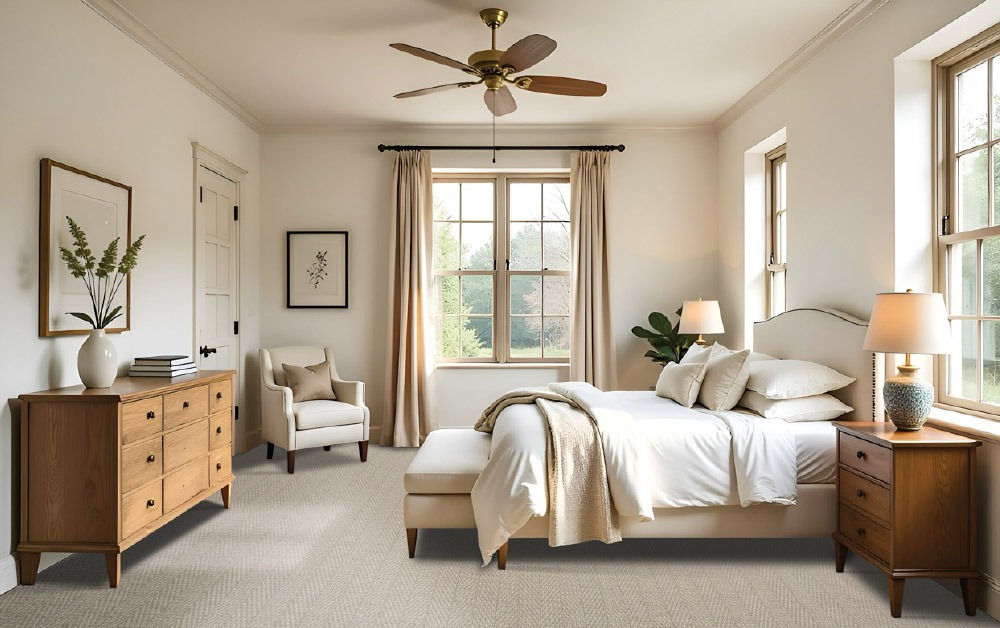
This comprehensive guide will explore the various carpet materials, helping you find the best carpet for your specific needs.
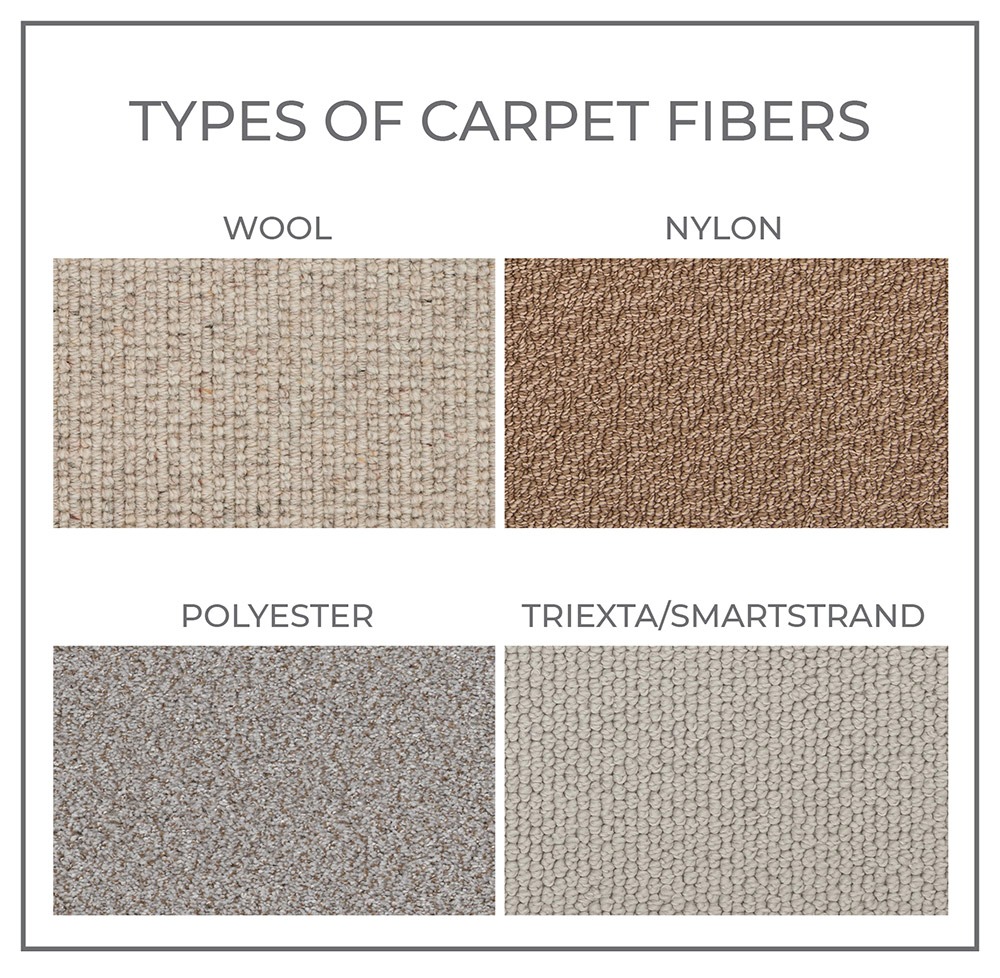
Understanding the different types of carpet fibers is essential when shopping for new carpet. Each fiber comes with its own set of pros and cons that affect how it performs in real-world use.
Here are the four most common carpet fiber types and what they bring to the floor:
Carpet pile refers to the density of a carpet and how the fibers are cut or looped. Cut pile carpet tends to be softer underfoot, while loop carpet often provides greater durability. The fiber determines how these different styles perform, with some materials being better suited to specific carpet types than others.
Wool is a natural fiber that has been used in carpet manufacturing for centuries. Known for its luxurious feel, wool is an excellent choice for those seeking high-quality carpet with exceptional durability. Natural wool fibers contain natural oils that help repel stains and soil, though wool is also typically treated to enhance its stain resistance.
One standout option is the Karastan Wool Carpet Collection, which blends premium wool fibers with timeless design, making it perfect for elegant interiors that prioritize both comfort and quality.
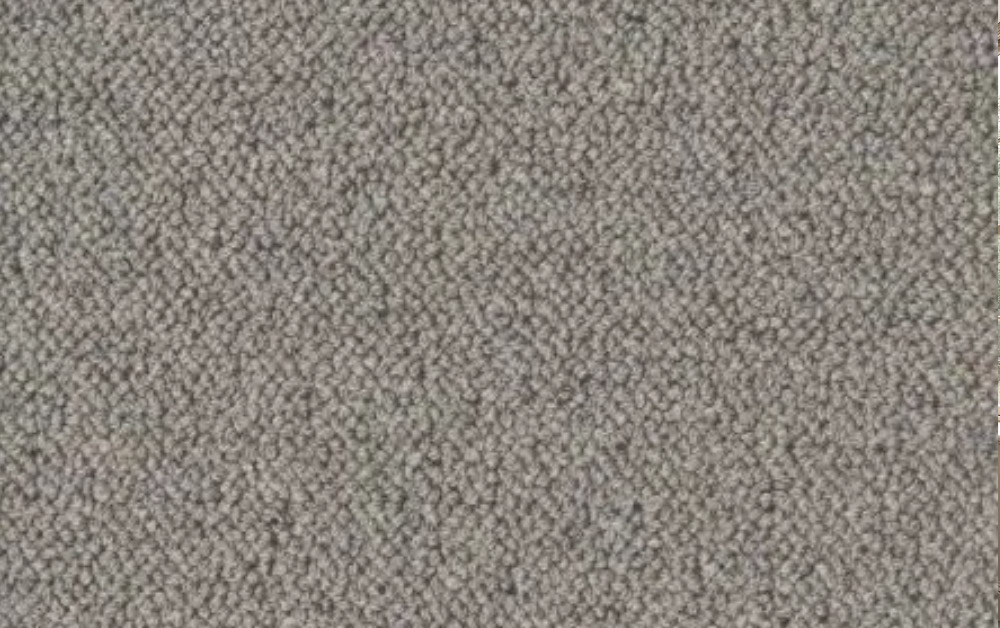
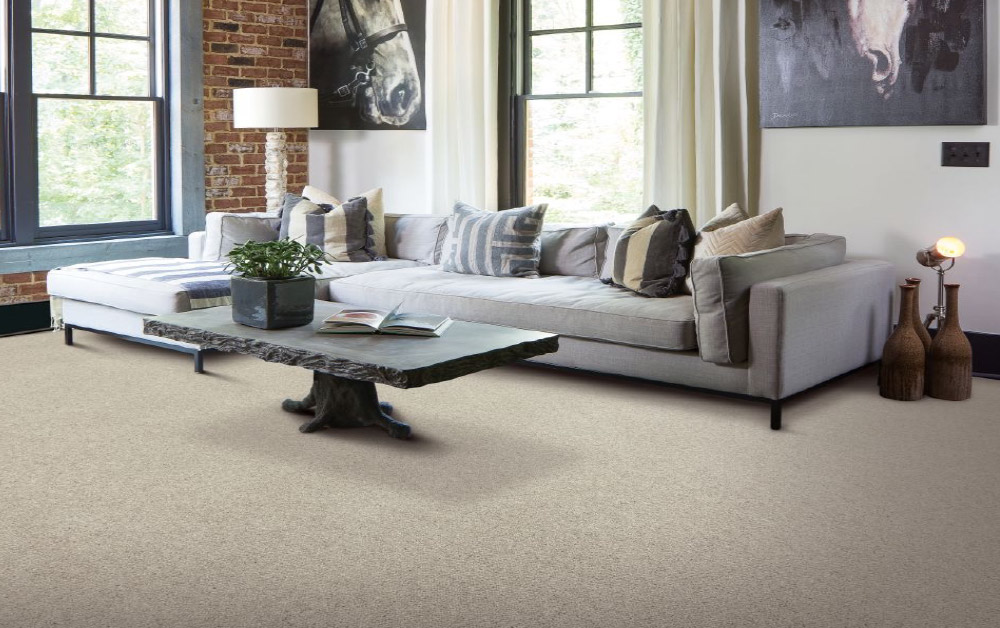
The luxurious feel of wool makes it one of the softest carpet options available. It's also naturally flame-resistant and environmentally friendly, as wool is a renewable resource. Wool is a great choice for bedrooms, living rooms, and formal spaces where comfort and aesthetics are priorities. However, wool carpet isn't the most affordable option, and professional carpet cleaning is often recommended for maintenance.
Nylon is one of the most widely used carpet fiber materials, known for its exceptional durability and resilience. As a synthetic fiber, nylon fibers provide excellent performance in high-traffic areas and are often considered the best carpet material for busy households. Nylon carpet maintains its texture and appearance even after years of foot traffic, making it ideal for stairs, hallways, and family rooms.
Nylon also offers several advantages as a carpet fiber when it comes to maintenance. It's inherently stain-resistant, especially when treated with stain protection. While not naturally as soft as wool, technological advancements have made nylon carpets increasingly comfortable underfoot. If you're looking for versatile carpet options that balance durability and comfort, nylon may be the best choice.
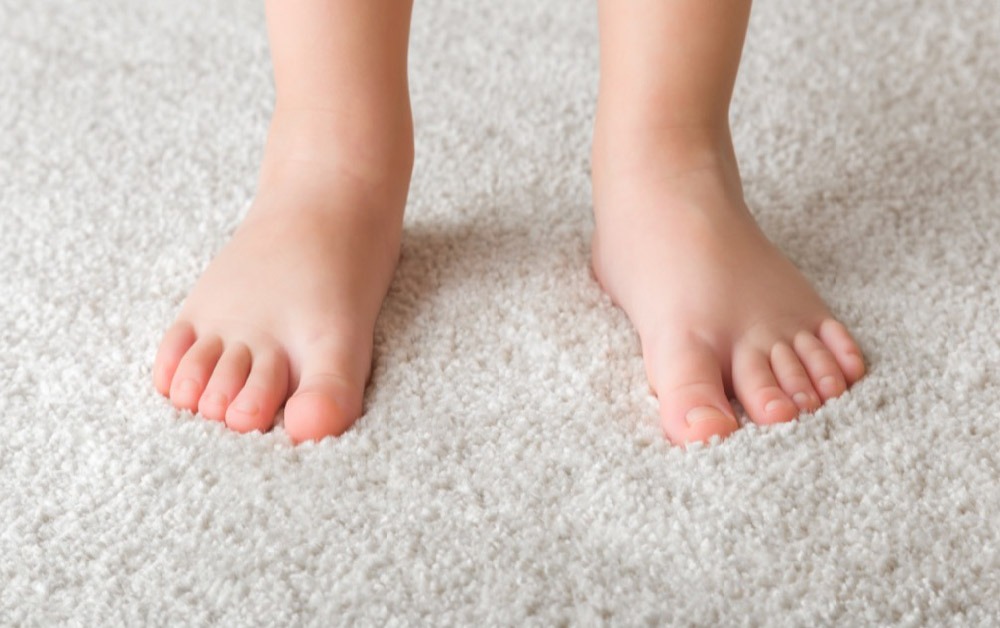
If you're looking for versatile carpet options that balance durability and comfort, the Canvas Comfort Textured Nylon Carpet offers budget-friendly, resilient choices in a wide variety of tones and textures.
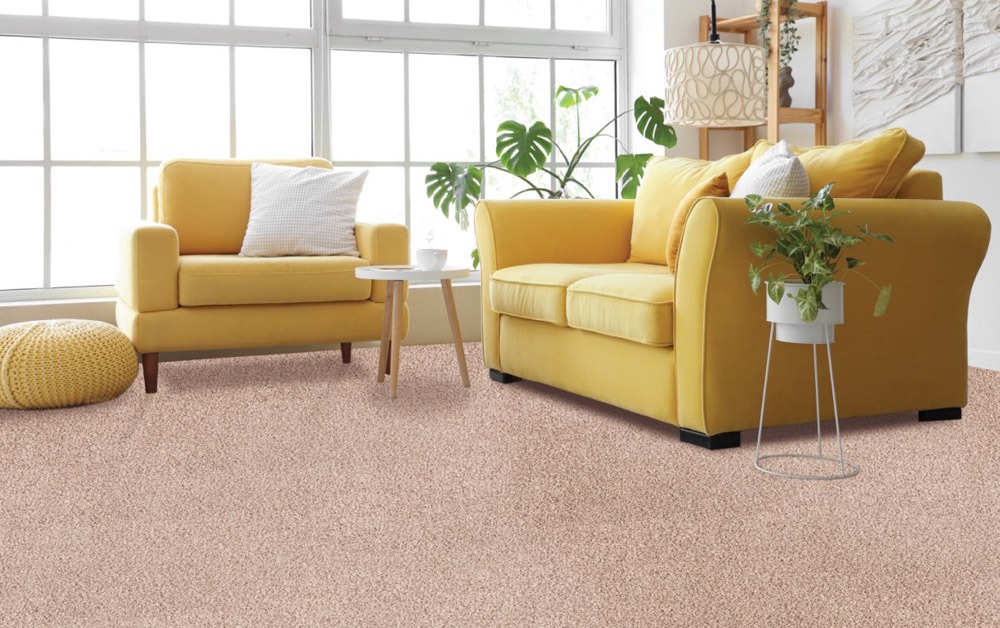
Polyester is another synthetic fiber used in carpet manufacturing that has gained popularity for its affordability and vibrant color options. Polyester carpet accepts dye exceptionally well, resulting in rich, fade-resistant colors that maintain their vibrancy over time. This makes it an excellent choice for those who want bold, colorful flooring options.
While not as durable as nylon or wool, many polyester carpets now feature improved durability thanks to technological advancements, making them a viable option among many different types of carpet. Polyester fiber is inherently stain-resistant, particularly against water-based stains, though it may struggle with oil-based spills. For moderate-traffic areas where budget is a concern, the Mohawk Everstrand Polyester Line is a smart and stylish option that delivers on softness and sustainability.
Triexta is a synthetic fiber that's particularly valued for its moisture resistance and colorfast properties, making it one of many different types of durable fibers used in carpet manufacturing. Triexta carpet is extremely resistant to water damage, mildew, and fading, making it perfect for basements, outdoor spaces, and areas prone to moisture. The fiber type is also highly resistant to static and fading from sunlight exposure, which is a crucial factor in many different types of carpet.
Triexta offers strong durability and built-in stain resistance that covers both water-based and oil-based spills. While nylon may be the top choice for extreme traffic or commercial spaces, triexta holds up exceptionally well in busy homes and adds a softer feel underfoot.
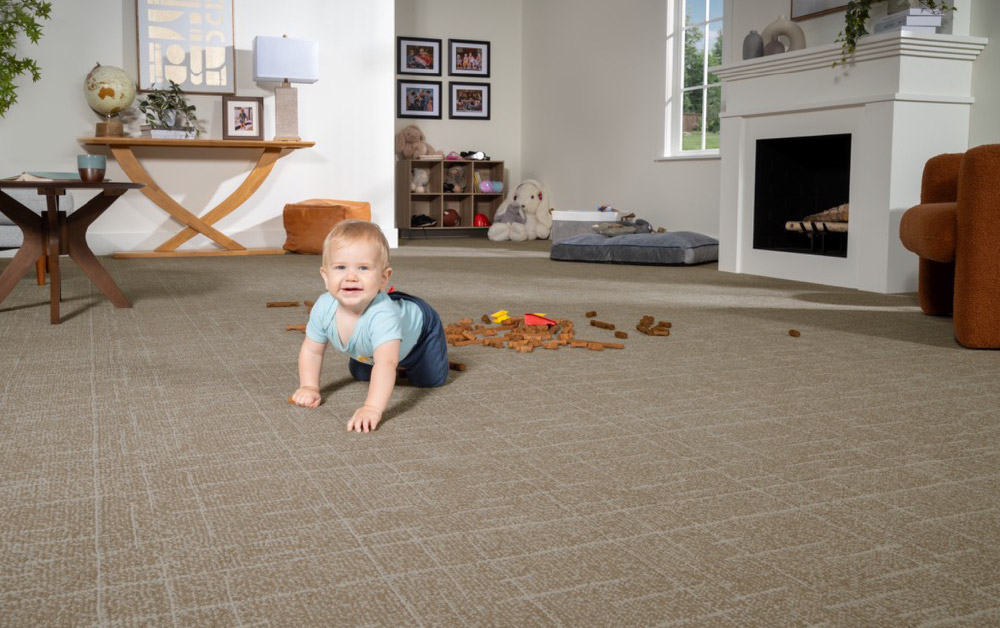
According to the Carpet and Rug Institute (CRI), triexta is recognized as a primary fiber used in both residential and commercial carpet due to its durability and built-in stain resistance. Environmentally, triexta (marketed under the name Sorona) is made from about 37% renewable resources, giving it a lower environmental impact than many traditional synthetics.
However, for specific applications like basements or indoor/outdoor spaces, Mohawk SmartStrand Triexta Carpet offers one of the best blends of comfort, durability, and easy care.
When deciding between wool and nylon, consider your specific needs and priorities. Wool is a natural fiber that offers unmatched luxury and comfort, while nylon is a synthetic fiber that provides superior durability and practical benefits, making both essential options in many different types of carpet. Both are considered high-quality carpet options, but they serve different purposes and preferences.
Nylon or wool carpets are often recommended for high-traffic areas, though for different reasons, as nylon is also known for its durability. Nylon stands up exceptionally well to heavy foot traffic without showing wear, while wool naturally hides soil and maintains its appearance despite use. The right carpet depends on your budget, aesthetic preferences, and environmental concerns. Wool is more expensive initially but may offer greater longevity, while nylon provides excellent value for its performance.
When deciding between wool and nylon, it really comes down to your lifestyle, budget, and priorities. Wool brings natural luxury and timeless comfort, while nylon delivers practical strength and serious durability. Both are top-tier, but they shine in different ways.
Here’s a quick comparison to help you weigh your options:
| Feature | Wool | Nylon |
|---|---|---|
| Fiber Type | Natural | Synthetic |
| Feel | Exceptionally soft and plush | Moderately soft, improving with technology |
| Durability | Very durable; hides soil well | Extremely durable; resists wear & tear |
| Stain Resistance | Naturally stain-resistant (with treatment) | Highly stain-resistant (especially treated) |
| Best For | Bedrooms, formal living areas | Hallways, stairs, family rooms |
| Eco-Friendliness | Renewable, biodegradable | Petroleum-based, less eco-friendly |
| Cost | Higher upfront cost | More budget-friendly than wool |
| Maintenance | Requires professional cleaning | Easier day-to-day care |
| Lifespan | Long-lasting with proper care | Long-lasting and low-maintenance |
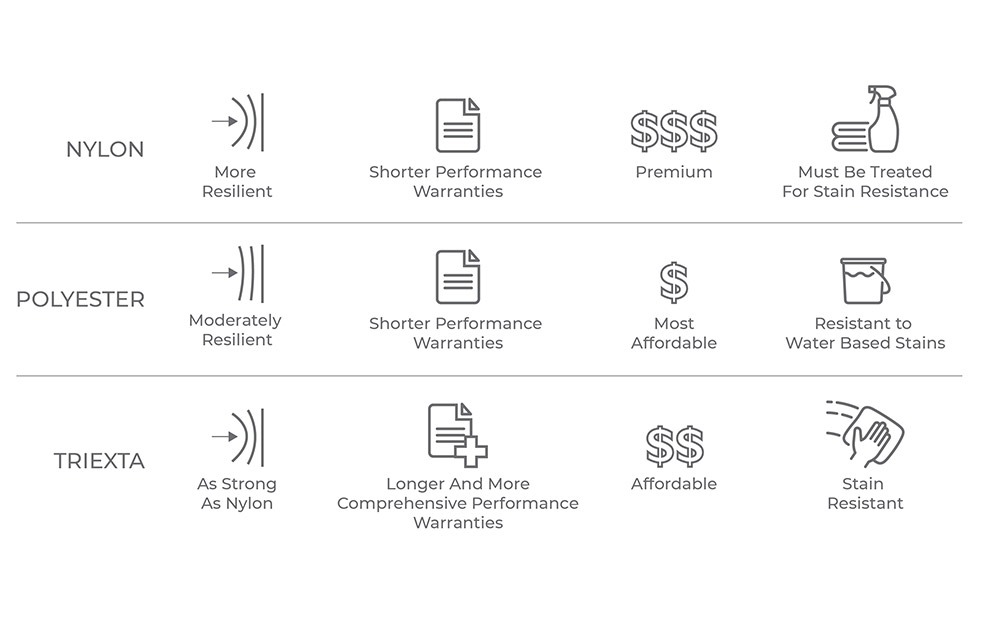
When evaluating synthetic fibers like polyester, nylon, and triexta, each has unique benefits that make it the right choice for specific situations. Here’s a quick rundown of the strengths of each fiber:
| Feature | Nylon | Polyester | Triexta |
|---|---|---|---|
| Durability | Most durable synthetic option; resists wear and tear | Moderate durability; best for low to moderate traffic | Strong durability with soft texture |
| Stain Resistance | Highly stain-resistant, especially when treated | Naturally resistant to water-based stains | Excellent stain resistance, even without treatments |
| Comfort | Comfortable underfoot, though not as plush as wool | Soft, with some of the softest textures among synthetics | Soft and comfortable, often rivaling wool |
| Moisture Resistance | Moderate | Good for water-based spills | Excellent moisture resistance |
| Affordability | Mid-range price, typically more expensive than polyester | Budget-friendly and affordable | Affordable compared to wool, more expensive than polyester |
| Best For | High-traffic areas like stairs and hallways | Budget-friendly spaces and rooms with moderate traffic | Moisture-prone areas like basements or indoor/outdoor spaces |
| Eco-Friendliness | Not particularly eco-friendly (petroleum-based) | Somewhat eco-friendly, though still synthetic | More eco-friendly, made from renewable resources |
| Maintenance | Easy to clean, low maintenance | Easy to maintain, great for DIY cleaning | Low maintenance, easy to clean |
The density of a carpet plays a huge role in its performance. Higher-density carpets, regardless of fiber, offer better durability and are generally more comfortable. When choosing between these synthetic options, also consider how tightly packed the fibers are. The backing of the carpet is equally important for long-term durability, with high-quality backing leading to better performance.
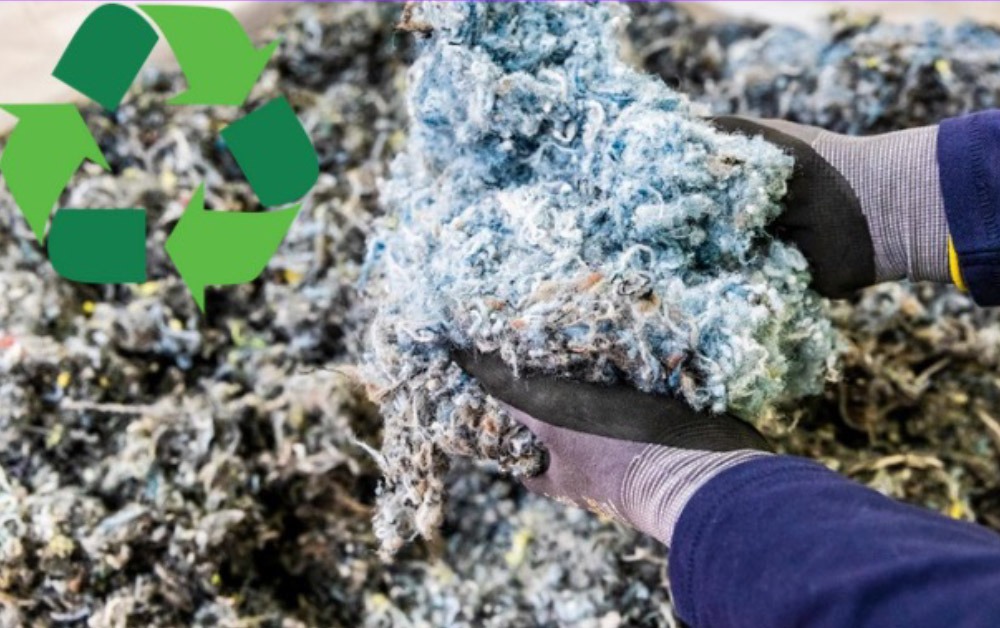
Natural fibers like wool offer environmental benefits that synthetic carpet materials cannot match. Wool is biodegradable and renewable, making it an excellent choice for eco-conscious consumers. While synthetic fibers such as nylon, polyester, and triexta are petroleum-based products, advancements in manufacturing have made some options more environmentally friendly than in the past.
Another consideration when choosing between natural and synthetic carpet is maintenance requirements. Wool demands more careful cleaning, while synthetic fiber types generally offer easier care routines, making them a popular choice for many different types of carpet. For those with allergies, wool is also naturally hypoallergenic and resistant to dust mites, which may influence your carpet decision based on health concerns rather than purely aesthetic or durability factors.
Look for certifications like Green Label Plus or carpets made from recycled PET bottles if you're aiming to reduce your environmental impact. Some polyester carpets, for example, are made from post-consumer plastics, while triexta uses partially renewable materials derived from corn glucose. Sustainability doesn’t mean sacrificing style—or softness.
Finding the best carpet for your home requires considering the specific requirements of each room.
For living rooms and family spaces with high traffic areas, nylon provides outstanding durability that stands up to daily use. In bedrooms where comfort is paramount, the luxurious feel of wool or the softness of new polyester carpet options might be preferable.
For basement installations, moisture resistance becomes critical, making triexta carpet an intelligent choice.
When selecting carpet for stairs, durability is essential, with cut pile carpet made from nylon or wool being among the best options. The fiber determines not only how your carpet will perform but also how it will feel underfoot, with different types of carpet fibers offering varying levels of plushness and resilience.
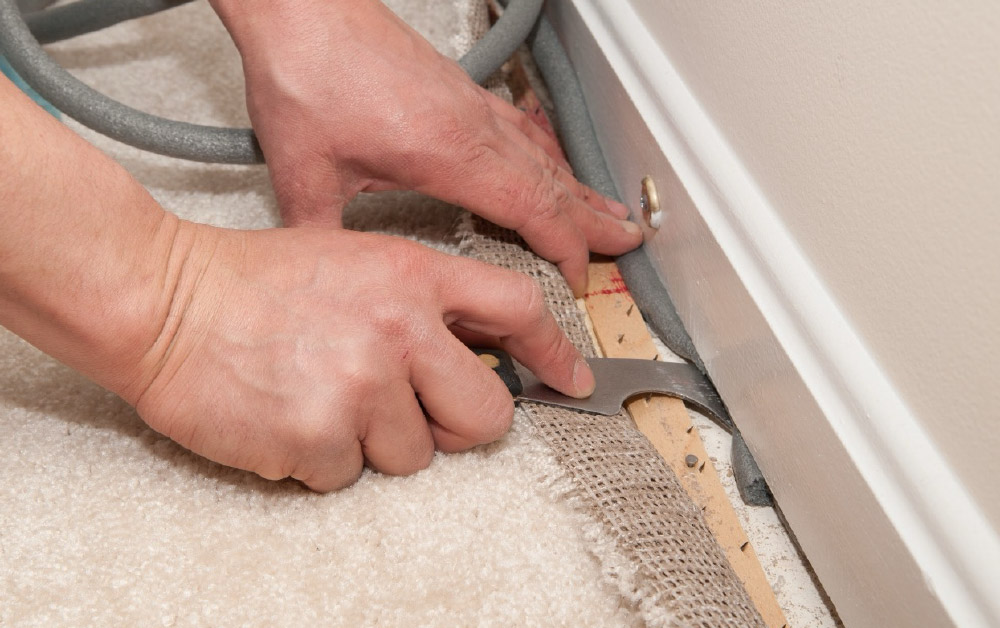
Carpet installation should always be performed by professionals to ensure proper stretching and seaming, regardless of which fiber you select. The type of fiber used affects not only installation techniques but also long-term maintenance requirements, influencing the kind of carpet best suited for each environment. Proper carpet maintenance varies by fiber type, with some requiring more frequent professional cleaning than others.
Stain resistance is a key consideration for many homeowners, especially those with children or pets. While most fibers can be treated to improve stain-resistant properties, some inherently repel stains better than others, and these durable fibers are often preferred. Nylon and polyester both offer excellent stain resistance when properly treated, while wool relies on natural materials and appropriate treatments to protect against spills in various carpet styles. Understanding the strengths and limitations of each fiber will help you develop appropriate cleaning routines for your new carpet.
Choosing a carpet involves balancing numerous factors including durability, comfort, stain resistance, and budget. Consider the primary purpose of each room and the level of foot traffic it receives. For high-traffic areas, prioritize durability with fibers like nylon or wool. For comfort-focused spaces, consider the softest carpet options like wool or high-quality polyester.
Your lifestyle should heavily influence your carpet selection. Households with children and pets may benefit from the stain resistance of treated nylon or polyester materials that are not only durable but also perfect for pet-friendly homes. Whatever your priorities, understanding the various carpet materials and their properties ensures you find the perfect carpet for your home that will provide years of comfort and enjoyment.
The journey to finding the perfect carpet for your home begins with understanding the different types of carpet fibers available. From the natural luxury of wool to the practical durability of nylon, the versatility of polyester, and the moisture resistance of triexta, each fiber offers unique advantages.
By carefully considering your specific needs, traffic patterns, budget, and aesthetic preferences, you can make an informed decision that provides the ideal balance of beauty, comfort, and performance for your living space.
Remember that the right carpet depends not just on the fiber itself, but on how that fiber is used in conjunction with proper installation, backing materials, and ongoing maintenance.